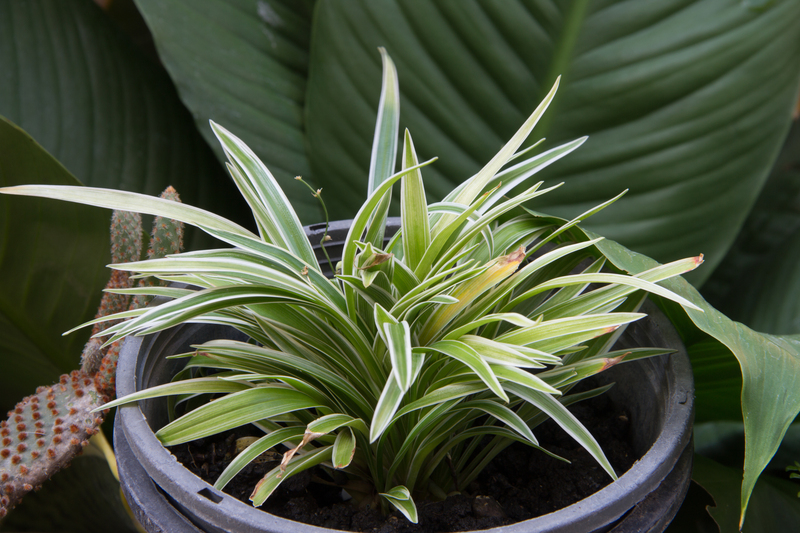A Guide to Developing a Child-Friendly Garden
Posted on 19/09/2025
A Guide to Developing a Child-Friendly Garden
Creating a child-friendly garden is an excellent way to nurture children's curiosity, independence, and love for nature. A well-designed garden provides endless opportunities for play, learning, and relaxation, making it an ideal space for children to explore and grow. In this comprehensive guide, you'll find essential tips, fun design ideas, and safety advice to help you develop a garden for kids that your entire family will enjoy.
Why Design a Garden for Kids?
Encouraging children to spend time outdoors comes with manifold benefits. Child-safe gardens can:
- Boost physical health through active play
- Enhance mental well-being and mood
- Stimulate creativity and imagination
- Teach practical skills such as gardening and responsibility
- Foster a connection with nature and wildlife
Whether you have a small urban yard or a sprawling suburban lot, incorporating children's garden design principles can create an inviting oasis for young explorers and the young at heart.

Essential Features of a Child-Friendly Garden
Before you start digging, consider these key features when planning your kid-friendly garden:
- Safety first: Prioritize secure spaces and non-toxic plants.
- Fun & imagination: Create opportunities for play and discovery.
- Accessibility: Ensure the garden is easy for little ones to navigate.
- Engagement: Select sensory elements and interactive features.
- Low maintenance: Choose plants and materials that require minimal upkeep.
Safety Considerations
Childproofing your garden is the first step in creating a secure environment. Here are a few tips:
- Avoid hazardous plants such as foxglove, oleander, and monkshood.
- Install secure fencing or barriers to prevent wandering.
- Cover water features or ponds, or use sturdy grills/covers.
- Opt for soft surfaces under play equipment--mulch, sand, or rubber mats reduce the risk of injury.
- Store tools, chemicals, and fertilizers in locked sheds or out of reach.
Planning Your Kid-Friendly Garden
Assess Your Space
Measure your garden and identify areas with different sunlight exposures, soil types, slopes, and existing plants.
- Note shaded areas for quiet corners or reading nooks.
- Mark sunny spots for fruit and vegetable beds.
- Identify boundary lines and neighboring properties for fencing.
Involving Children in the Process
Engage your kids in the planning and planting process--they'll feel a sense of ownership and pride in their space! Invite them to:
- Pick out favorite plants and flowers
- Suggest garden themes--dinosaurs, fairies, oceans, or colors
- Sketch their dream garden
- Help choose garden decorations and accessories
Design Ideas for a Child-Friendly Garden
1. Create Zones for Play and Learning
Divide your garden into distinct areas to encourage a variety of activities:
- Active play areas: open lawns, sand pits, or climbing frames
- Corners for quiet activities: reading nooks, hammocks, or teepees
- Gardening spaces: raised beds or mini allotments
- Creative nooks: mud kitchens, painting easels, or chalkboards
- Wildlife zones: ponds, bug hotels, or bird feeders
2. Choose Child-Safe Plants
The best plants for a children's garden should be safe, hardy, and engaging:
- Edibles: sunflowers, strawberries, cherry tomatoes, herbs
- Sensory: lamb's ear, lavender, mint, nasturtiums
- Fast-growing: radishes, snap peas, cress
- Bold and bright: zinnias, marigolds, daisies
Avoid any plants known to be toxic if ingested--check with local nurseries or poison control guides for your region.
3. Incorporate Natural Play Features
- Logs and stumps: for climbing, balancing, or seating
- Willow tunnels or dens: living structures for hide-and-seek
- Stepping stones: pathways to hop along
- Loose parts: sticks, stones, pinecones for creative building
4. Install Sensory Elements
Children benefit from interacting with a range of textures, sounds, and smells in the garden. Sensory gardens excite their senses and promote relaxation:
- Herb spirals or patches packed with fragrant oregano, thyme, and basil
- Water features--bubbling fountains, birdbaths, or mini waterfalls
- Textured walkways featuring smooth pebbles, crunchy gravel, or soft moss
- Wind chimes or rustling bamboo for soothing sounds
Simple DIY Projects for a Child-Safe Garden
Build Raised Beds
Raised garden beds are perfect for young gardeners. They make planting, watering, and weeding more accessible for tiny hands and reduce soil compaction. Use untreated wood or recycled materials and ensure the corners are smoothed and secure.
Create a Fairy or Dinosaur Garden
Set up a themed miniature garden in a pot or corner. Add mini figurines, stones, moss, and twigs to let children's stories and imaginations bloom.
Design a Mud Kitchen
An outdoor mud kitchen encourages sensory play and creativity. Old pots, pans, and utensils are all you need! Set it near the garden beds so kids can "cook" with herbs, mud, and petals.
Build a Bug Hotel
By stacking logs, bamboo canes, and bricks in a sheltered space, you provide homes for helpful insects. This is a fun hands-on project to introduce kids to garden biodiversity.
Tips for Maintaining a Low-Maintenance, Kid-Friendly Garden
- Choose hardy, resilient plants that tolerate rough handling.
- Keep paths wide and clear for little feet and wheelbarrows.
- Mulch beds to suppress weeds and retain moisture.
- Use drip irrigation or soaker hoses to simplify watering.
- Install secure storage for potentially dangerous tools and substances.
- Regularly check play equipment and garden features for wear or damage.
Encouraging Wildlife in Your Family Garden
A wildlife-friendly garden teaches children to appreciate and protect nature. Include features that attract beneficial creatures:
- Berries, nectar-rich flowers, and seed heads for birds and bees
- Small ponds, log piles, and rocks for frogs, newts, and insects
- Bug hotels and bee houses for pollinators and helpful insects
- Compost heaps for worms and beetles
Teach Respect for Nature
Guide your children to observe and care for the creatures they meet--watching butterflies, listening to birds, and gently turning over stones to spot insects all foster empathy and stewardship.
Seasonal Activities for Kids in the Garden
- Spring: Sow seeds, spot early pollinators, and start a sunflower race
- Summer: Pick berries, build dens, or make wildflower bouquets
- Autumn: Leaf crafts, collect seeds, and plant bulbs for next year
- Winter: Feed the birds, look for animal tracks, and plan new projects
Each season offers unique learning opportunities and fosters a year-round connection to your child-focused garden.
Encouraging Safe, Creative Play
Set Boundaries and Rules
Clear boundaries and explanations are key to safe exploration. Explain which plants are for picking, set out safe zones for digging, and remind children of garden safety--no running with tools, no lifting heavy objects alone, and always check with an adult before tasting berries or plants.
Let Kids Get Messy!
Gardening is often a hands-on, muddy adventure. Invest in sturdy boots, gloves, and old clothes so that kids can dig, plant, and water without worry.
Future-Proofing Your Child-First Garden
- Modular play equipment: Choose adaptable items that can be reconfigured as interests change
- Plant with all ages in mind: Incorporate shady trees, quiet corners, and robust shrubs that will grow with your family
- Encourage responsibility: Assign tasks as children grow older--watering, weeding, or harvesting
- Plan for flexibility: Keep open spaces that can morph into new zones as your children's needs evolve

The Long-Term Benefits of a Child-Engaging Garden
Research shows that children who spend more time outdoors are:
- More physically active and have better motor skills
- More confident and independent
- Resilient and adventurous learners
- Environmentally conscious and empathetic
Child-friendly garden spaces reinforce these traits--laying the foundation for a healthy, eco-aware, and joyful childhood.
Conclusion: Growing Memories in Your Family Garden
Developing a garden designed for children is about much more than planting flowers or building sandboxes. It's about crafting an inspiring environment where laughter rings out, muddy hands discover worms, and tiny seeds promise new beginnings. With careful planning, safe features, and plenty of opportunities for creativity, your child-first garden will be a cherished place for years to come.
So grab your trowel and gather your little helpers--the journey to a beautiful, bountiful, and child-friendly garden is about to begin!



